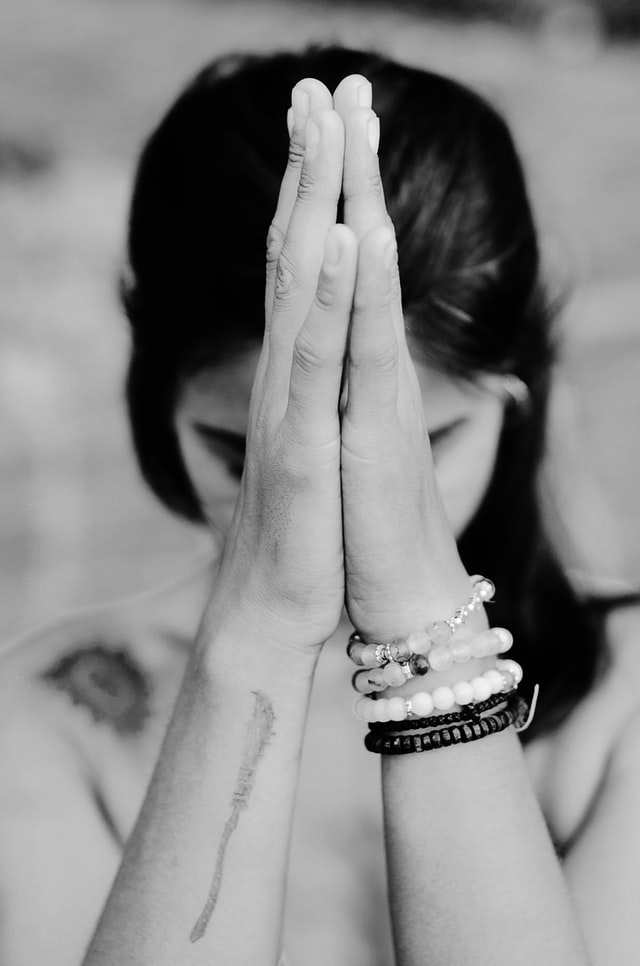
I wanted the formula. The right way. The best method to practice meditation—when you have a small baby and no free time.
Surely there was a formula.
The scientific approach to practice was the reason I’d been drawn to Buddhist meditation in the first place. There were steps to take and anyone who followed those steps would find the vast potential of their own mind.
You didn’t have to be special. And you didn’t have to wait and hope for that moment of grace to find you in some random moment. You could go after it yourself and discover the beautiful experience of being…step-by-step.
And yet, as I sat in my living room holding my baby son in my arms, something inside me knew all practitioner bets were off. I had been training in a lineage of Tibetan Buddhist meditation as well as traditional yoga. But there was no method of meditating in the messy 24/7 reality of motherhood. I had gone off-piste—in a wonderful, heart-exploding-with-love kind of way. But still, decidedly off method.
The problem was that the path to wisdom and insight I had been taught required me to train my chaotic mind by sitting. Sitting still. Alone. Surrounded by quiet.
By the time my son was six months old, it had become crystal clear to me that I wasn’t going to be alone or surrounded by quiet for a long, long time.
So how could I continue my meditation practice when I wasn’t sleeping and my baby was always with me? I went to my meditation teacher for advice, but he was a man with no children and no experience of the messy reality of my world as a new mother.
“You might have to become your own teacher here, Sarah,” he told me.
This was not what I wanted to hear! I wanted the answer, the formula to get me out of this mess. I wanted my practice to stay the way it had always been, because quiet, still, and alone were all the things I so desperately craved.
And if I’m being totally honest, I wanted someone to take the steering wheel, which had been thrust unexpectedly into my hands. I wanted my teacher, a teacher, someone else, to figure it out for me.
Why are we so resistant to taking full responsibility for creating our own spiritual practice? Why did I try so hard to shake off this moment of my own empowerment?
I guess because it’s the hard part. The moment when the instructions meet the messy realities of our life. When things get personal and we have to start figuring things out for ourselves.
But this is also the gritty moment when the grain of sand enters the oyster. This is the messy, uncomfortable, terrifying moment when the magic starts to happen.
We learn the meditation instructions, the wisdom, and the teachings that have been passed down to us from the lineages of our teachers. But the way we apply those instructions, the way they fit into our life, and the way we practice is something we must create ourselves, in collaboration with our greatest teacher of all—our uniquely messy life.
The most empowering realisation we can have with meditation and the training of our own mind is that it is up to us what our practice looks like in daily life. Our meditation practice should be as unique to us as our fingerprints. It should naturally evolve as our daily routines, circumstances, and understanding change. And if we allow this process to happen, our meditation practice will become as familiar to us as our childhood teddy. Comfortable. Worn in around the edges. We will stop insisting it look like a retreat center, that it look like someone else’s practice, and allow it to look more like us.
That sweet little baby boy who shook up my quiet, straight-forward sitting meditation practice (and my whole world) is 11 years old. And now I can see he has been my greatest teacher. Because he pushed me out of complacency and forced me in the messiest possible way to take full responsibility for my practice.
Because of him, I learned to practice anywhere—on a walk, standing in line, sitting on a child’s bed in a dark room. I learned to practice even when it didn’t look pretty, even when I didn’t feel like it, even when I only had three minutes or knew I was probably going to be interrupted.
And all those small, messy-looking sessions added up. And I got to discover for myself that everyone’s mind really does have the capacity for stillness, for luminosity, and for joy. Even when life doesn’t look like a monastery or retreat center on the outside.
It is a creative journey, our meditation practice. And we are allowed to take full responsibility for creating a practice that feels right for us.
Our practice is just that—ours.
~











Read 8 comments and reply